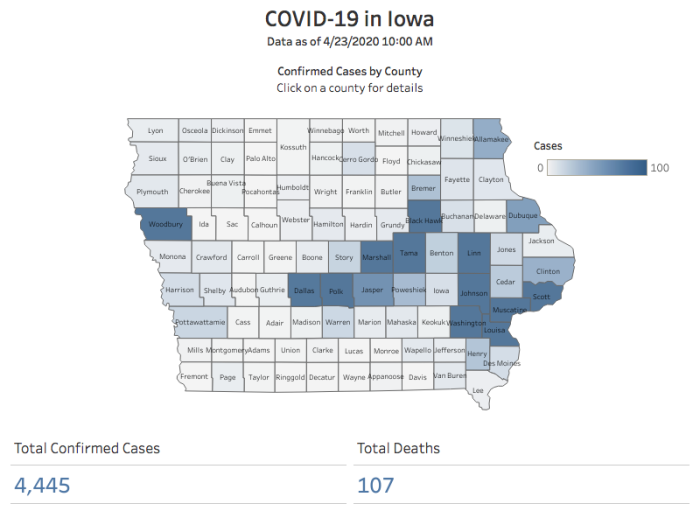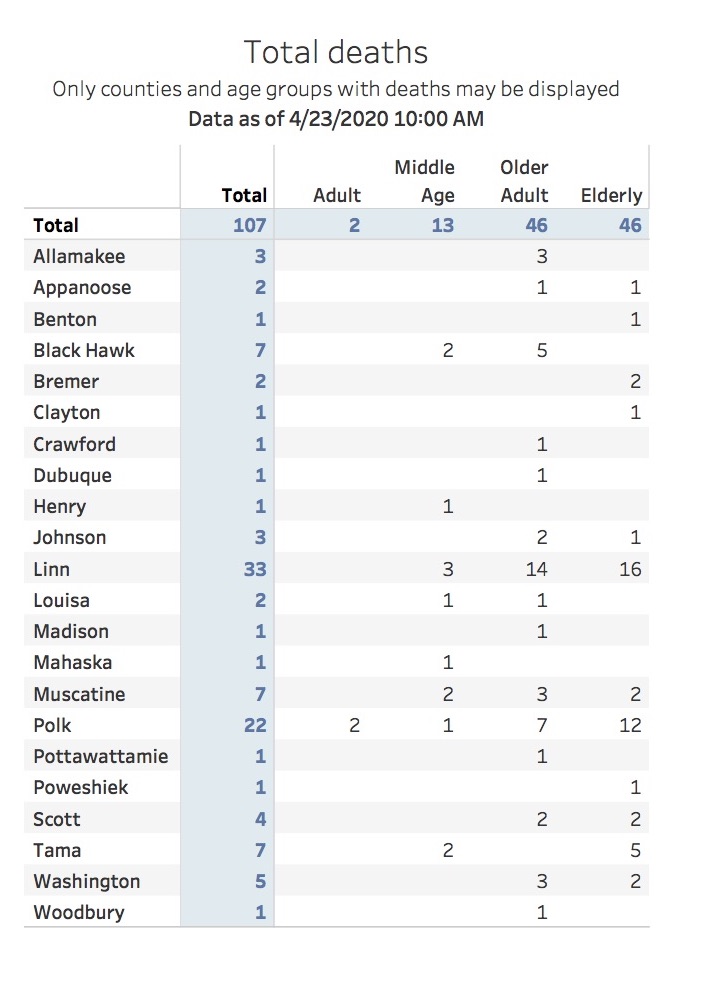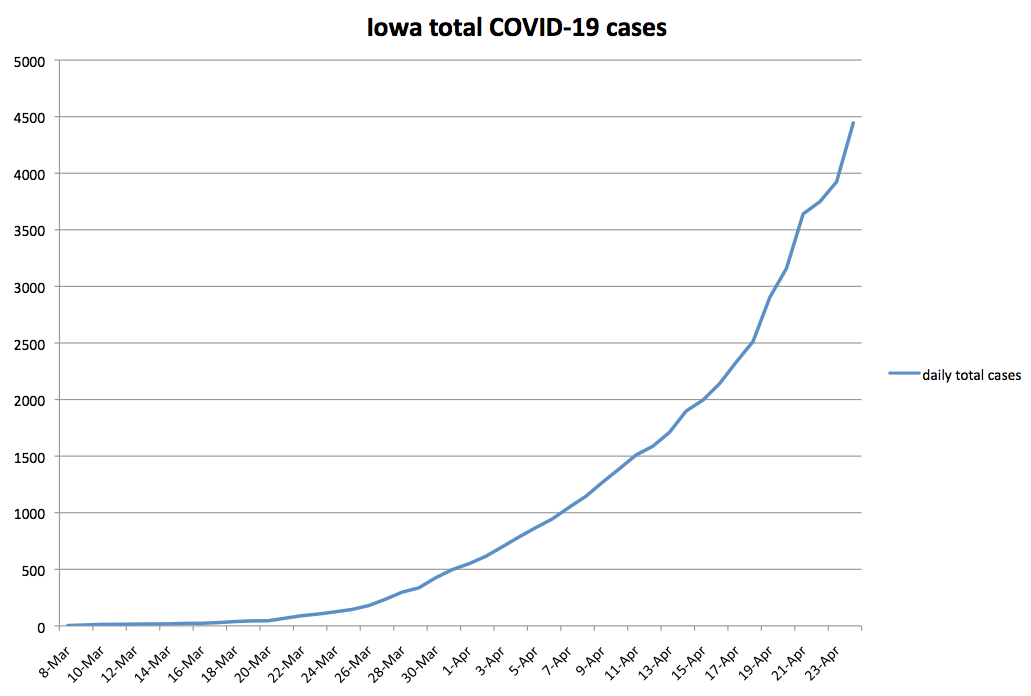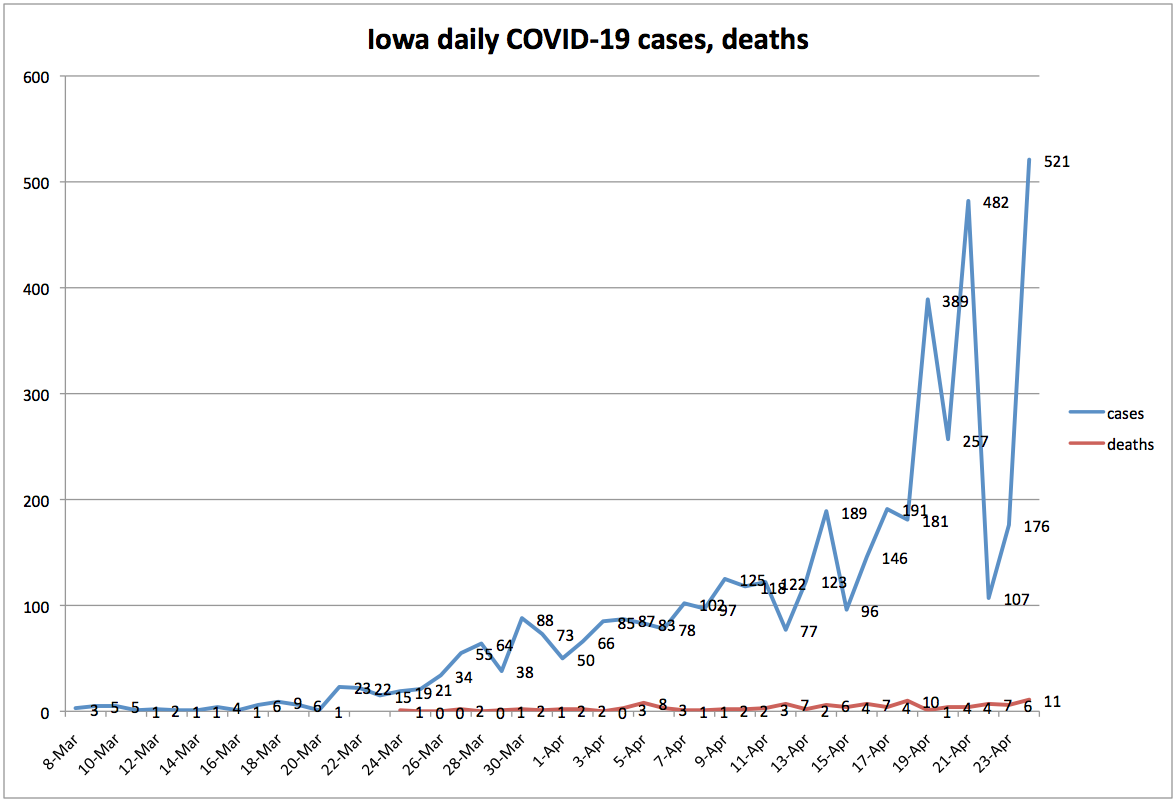The number of Iowans known to have died because of novel coronavirus infections reached 107 on April 24, as reported cases and deaths each hit new one-day highs.
COVID-19 has now claimed more Iowa lives than all foreign military conflicts of the last three decades.
Here’s the latest official breakdown of Iowa fatalities attributed to COVID-19, by county and age group. “Adult” refers to people between the ages of 18 and 40, “middle age” is 41 to 60, “older adult” is 61 to 80, and “elderly” refers to Iowans at least 81 years old. About half of the Iowans who have died in the pandemic resided in long-term care facilities.
The official toll does not include one person whose COVID-19 test could not be processed, even though the Washington County coroner ruled the death to be coronavirus related. In addition, because state numbers lag county-level totals by a day, it doesn’t include two more deaths Black Hawk County health officials announced on April 24.
The number of Iowans hospitalized for COVID-19 rose sharply over the past week from 183 to 278, suggesting we’re nowhere near the downward slope for fatal infections.
According to the Iowa Department of Veterans Affairs, seven Iowans died among more than 3,000 who served in the Persian Gulf War of the early 1990s. Another 64 Iowa military service members died in the Iraq War that began in 2003, while 31 have died in Afghanistan (mostly during the past decade). One Army staff sergeant was killed by a roadside bomb in the Philippines in 2009.
Bleeding Heartland will have more to say in a forthcoming post about Governor Kim Reynolds declaring on April 24 that “it’s time” to begin loosening restrictions on business activity, even as case numbers climb. For now, let’s all pray those policies don’t push the COVID-19 death toll past the 508 Iowans who died during the Korean Conflict or the 867 who died in Vietnam.
______________________
Appendix: Charts showing daily reported numbers of COVID-19 cases and deaths in Iowa




